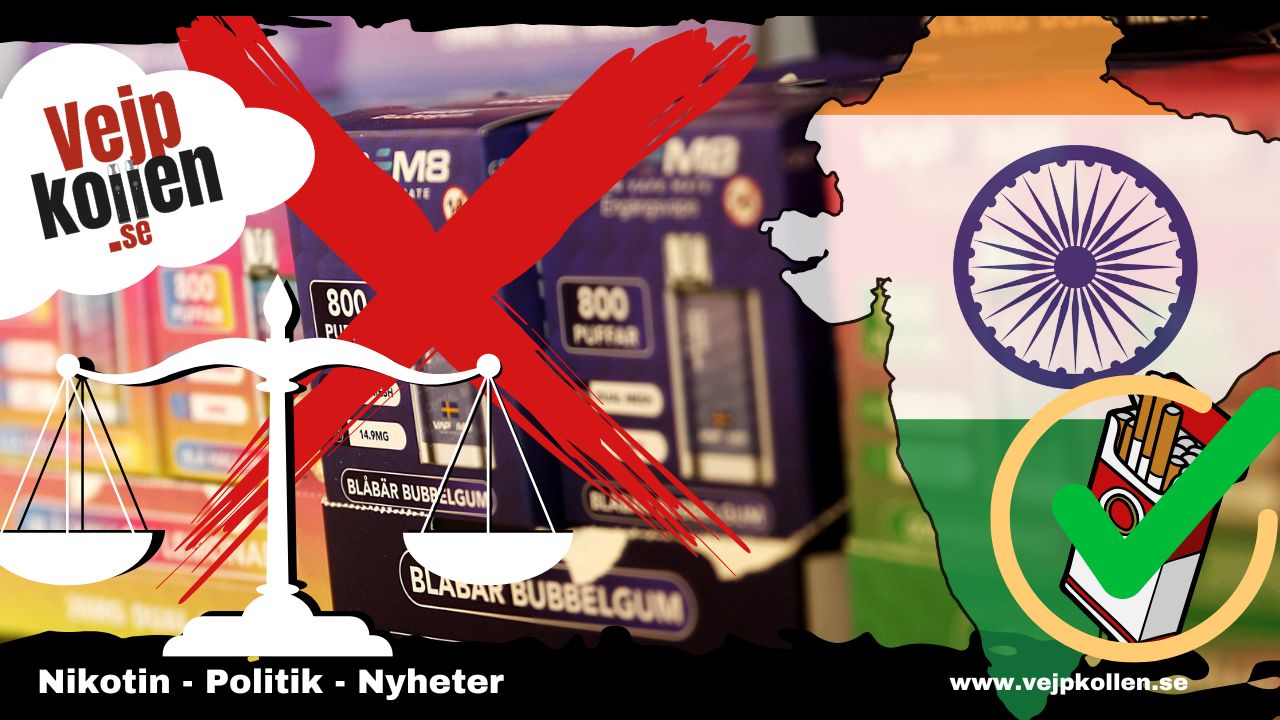India's government banned e-cigarettes in 2019 with the aim of eliminating them from the market. Five years later, the reality in the big-smoking country seems to reflect something else - e-cigs are still very much available, just in a slightly more creative distribution chain. Many users don't even seem to realise that there is a ban.
Although nearly 29 per cent of the Indian population (aged 15 years and above) use harmful forms of tobacco or nicotine regularly, less harmful alternatives such as e-cigarettes have not been looked upon favourably in the country. Following pressure from the WHO and others, all sales of vejp products were banned in the country six years ago. The Indian health minister was praised by the WHO secretary-general for the initiative, while critics argued that the decision only favoured the domestic tobacco industry. It was clear that India could continue to boast the title of 'most smokers in the world'
New ways to sell e-cigs
The ban on e-cigarettes was introduced in 2019 and covers the entire chain from manufacturing, exporting and transporting to selling, distributing, advertising and more. In December 2024, the Indian government reported that authorities seized e-cigarettes worth around 42 million rupees (around ₹4.9 million) between April and November alone. Just before that, a study by the Public Health Foundation of India (PHFI) had identified at least 83 online shops illegally selling e-cigarettes. So the ban does not seem to have stopped sales - but rather created alternative ways to do so.
A Dr Prateek Wadhokar, a cardiologist in Pune, that the attractive flavours and illegal availability make e-cigarettes hard to resist.
"Many people don't even know they are banned!" he tells the media channel India Media Group.
From social media to the smuggling market
Media India Group says it has seen several reports showing that e-cigarettes are still sold everywhere in tobacco shops and small kiosks, often under the counter. And despite the ban, marketing and sales continue to thrive in digital channels.
The reports are partly confirmed by Shrey Madaan active in the Consumer Choice Centre advocacy group.
"It is a comprehensive 'blanket ban'. But only on paper. However, the vast majority of products that were legal before the ban are still available to those who vejpar. Many of the companies have chosen to rename the products "e-diffusers" instead of e-cigarettes. Technically the same thing, but one is banned while the other is not. at the same time we have a huge black market on the streets via physical shops, social media, friends and acquaintances selling. They import via neighbouring countries that have no bans. It's a given" says Shrey Madaan, in the podcast Vaping Unplugged.
Warns about vejpning
The debate on e-cigarettes has been fierce in India. Today, nearly 30 per cent of the population uses tobacco products of various kinds, with sales mainly coming from large domestic companies. A large part of the population also uses a domestic variant of snuff-like chewing tobacco (gutka) or smoking bidis (an often flavoured cigarette rolled in tobacco leaves). The use of both products is considered pose similar health risks as cigarette smoking. However, non-Indian e-cigarettes have become popular and have challenged the order in recent years. Several influential Indian doctors have focused on the potential risks of the products. Statements about risks of lung infections, lung damage, asthma, heart attacks, changes in heart rhythm and addiction have attracted a lot of media interest.
Less harmful nicotine use
However, the Indian view is not shared by all. Vejpning, which has been on the market for almost 20 years, is considered by several major Western health organisations to be significantly fewer risks compared to the other available inhalation method of nicotine use: smoking. However, this applies to regulated products. Mr Madaan warns that the black market does not exactly guarantee product safety.
"Since India has opted for prohibition, it has not set up a system to regulate the content of the products. Technically, no one really knows what the e-liquid contains here, even in the shops that have been selling the products for a long time. For example, nobody checks the nicotine concentration, which can be very high, or whether the liquid contains other inappropriate substances. This is the real downside of the ban for us as consumers. There is no product safety and no age verification," he says.
"Ignoring the science"
India was recognised in 2019 by the WHO for its initiative to ban vejp products. Something that Shrey Madaan finds strange.
"The message in India has become that vejping is very dangerous and smoking is not as dangerous. It's a narrative based on ideology more than science. It's a bit odd that the WHO is pushing for harm reduction in other areas, with clean needles for those who abuse hard drugs, safe injection rooms and so on, but not when it comes to smoking and nicotine. They completely ignore the possibility that smokers can reduce the risks of their nicotine use through vejpning. It goes against the science that exists today and that worries me," he told Vaping Unplugged.




